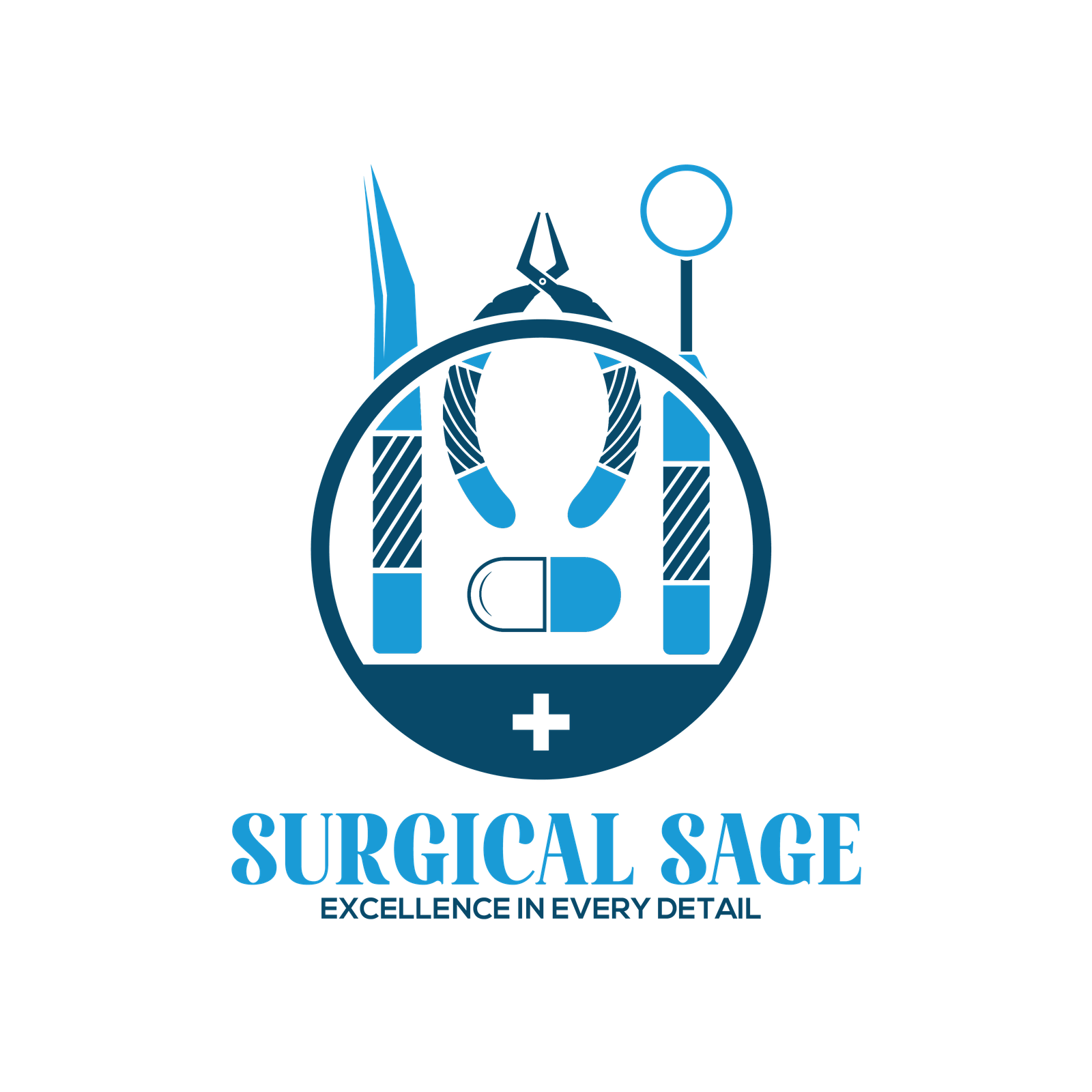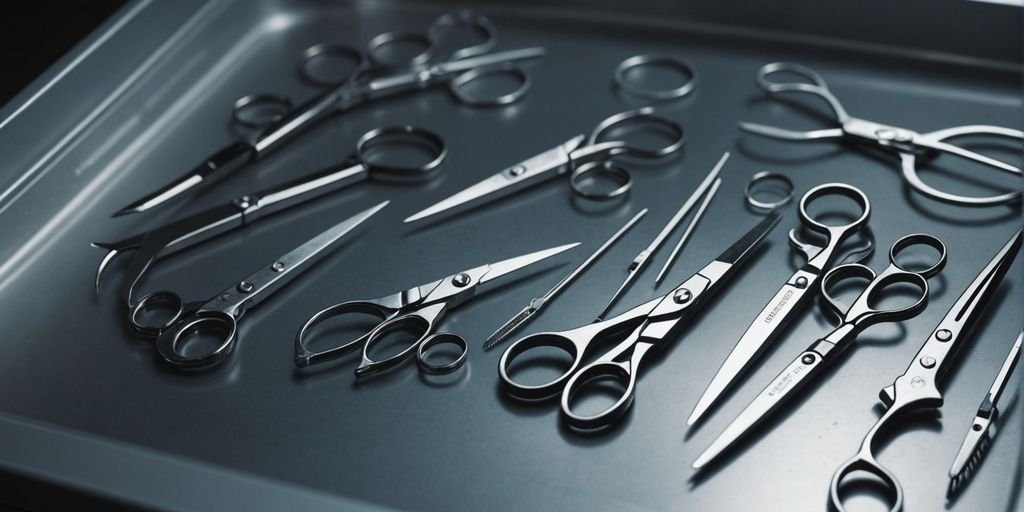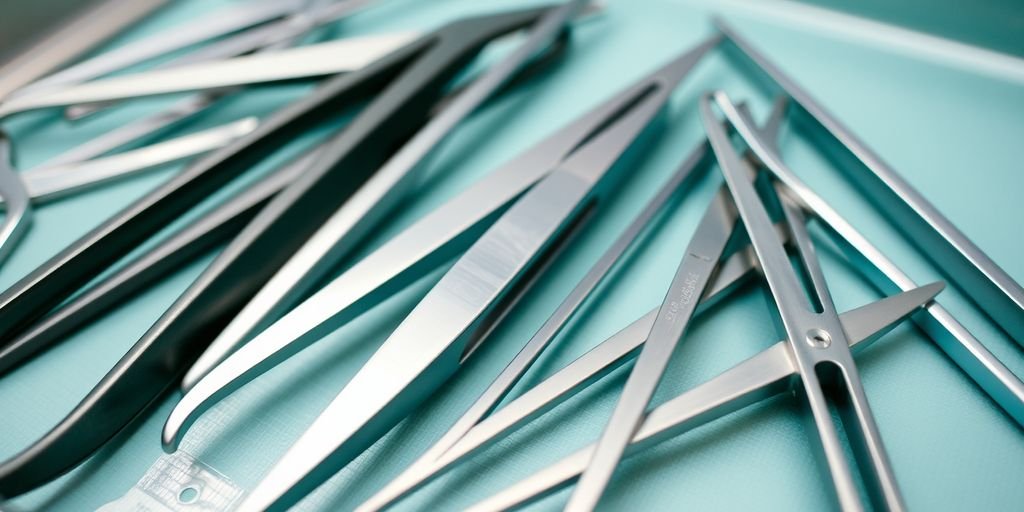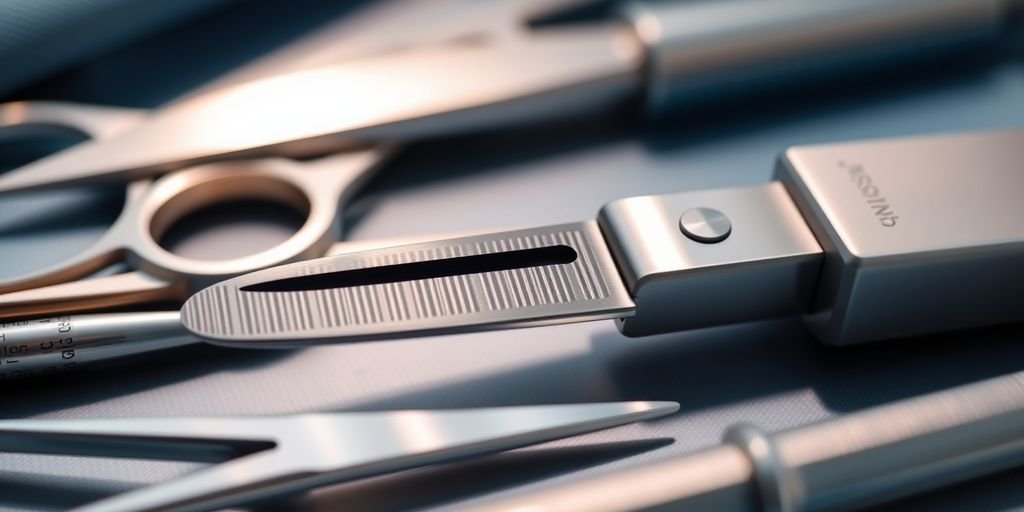Surgical scissors are crucial tools in any surgical procedure. They come in various shapes and sizes, each designed for specific tasks. Knowing which type to use can make a big difference in the success of a surgery. This article will guide you through the different types of specialized surgical scissors and their specific uses in various medical procedures.
Key Takeaways
- Surgical scissors are designed for specific tasks, making it important to choose the right type for each procedure.
- Metzenbaum scissors are ideal for delicate tissue dissection due to their long shank-to-blade ratio.
- Mayo scissors are robust and perfect for cutting heavy tissues like muscles and fascia.
- Iris scissors, with their fine blades, are used for precise cutting in ophthalmic and plastic surgeries.
- Proper maintenance and care of surgical scissors ensure their longevity and effectiveness in medical procedures.
Metzenbaum Scissors: Precision in Delicate Tissue Dissection
Design and Features
Metzenbaum scissors are a versatile operating scissor ideal for dissecting delicate tissues in confined places. They come in various sizes, typically ranging from 4.5 inches to 14 inches. The blades are usually blunt and curved, which helps in avoiding accidental injuries. The long shanks provide excellent haptic feedback, allowing the surgeon to feel whether the tissue is soft or hard.
Common Applications
These scissors are most commonly used in organ and heart operations. They are perfect for handling abdominal tissue and organs, which are often delicate and fragile. Metzenbaum scissors are also used for blunt dissection, where the blades can be used to spread the tissue apart gently.
Advantages in Surgery
One of the main advantages of Metzenbaum scissors is their ability to provide precise dissection. The long, narrow blades offer better vision and control in narrow surgical areas. Made from high-quality materials like German stainless steel, they are durable and corrosion-free, making them ideal for repeated use in various surgical procedures.
Mayo Scissors: Robust Tools for Heavy Tissue Cutting

Mayo scissors are specially designed for cutting tough tissues during surgery. These versatile instruments come with strong blades that can be either straight or curved, making them suitable for various surgical tasks.
Iris Scissors: Fine Cutting for Ophthalmic and Plastic Surgery

Blade Design
Iris scissors are small instruments with very sharp and fine tips. They are available in both straight and curved designs, allowing surgeons to access hard-to-reach areas. These fine, sharp scissors are ideal for detailed dissection of fine tissue and fine suture removal.
Specialized Uses
Originally designed for ophthalmic surgery, iris scissors are now used in a variety of delicate procedures. They are perfect for cutting fine sutures, OB/GYN procedures, and dermatologic surgeries. Their sharp blades and small size make them practical for maneuvering within the eye and other delicate areas.
Handling and Maintenance
Crafted from high-quality stainless steel, iris scissors are strong and reliable. They can be cleaned and sterilized for multiple uses. Proper handling and regular maintenance ensure their longevity and effectiveness in surgery.
Iris scissors provide surgeons with highly accurate and precise dissection control, preventing any tissue damage that could cause complications.
Bandage Scissors: Safe and Efficient Dressing Removal
Design for Safety
Bandage scissors, also known as utility scissors, are designed with one blunt tip and one sharp tip. This design ensures that dressings, bandages, or clothing can be cut close to the skin without causing harm. The blunt tip prevents accidental injury or puncture wounds, making these scissors ideal for wound care, postoperative care, and first aid.
Common Uses in Medical Settings
Bandage scissors are primarily used for removing dressings, bandages, or gauze. They are common in various medical settings, including:
- Wound care
- Postoperative care
- First aid
These scissors come in a variety of sizes, typically ranging from 3.5 to 6 inches (8.75 to 15 cm).
Types of Bandage Scissors
There are several types of bandage scissors, each catering to different needs:
- Lister Bandage Scissors: The most common type, featuring an angled design for greater visibility and control.
- Knowles Bandage Scissors: Lightweight and durable, designed to cut through thick materials.
- High-Level Bandage Scissors (Knowles): Known for their durability and efficiency.
- Left Handed Bandage Scissors: Specifically designed for left-handed users.
- Supercut Lister Bandage Scissors: Enhanced for sharper and more precise cuts.
The small lower blade of Lister bandage scissors slides safely and easily beneath tight bandages and fabrics, ensuring patient safety during removal.
Wire Scissors: Cutting Through Tough Materials
Blade Characteristics
Wire scissors are built with sturdy blades and short, robust handles. These scissors often feature a serrated edge, which provides a secure grip for efficient wire cutting. The blades are designed to cut through wire without damaging the surrounding tissues, making them ideal for procedures involving the fixation of bones with wires.
Orthopedic and Neurosurgical Applications
Wire scissors are commonly used in orthopedic and neurosurgical procedures. They are essential for cutting through rigid materials like wires and other metallic components. These scissors are particularly useful in surgeries that require the removal or adjustment of wires used in bone fixation.
Maintenance and Care
To ensure the longevity and effectiveness of wire scissors, proper maintenance is crucial. Regular cleaning and sterilization are necessary to prevent rust and maintain the sharpness of the blades. It’s also important to check for any signs of wear and tear, as damaged scissors can compromise surgical outcomes.
Wire scissors are made of hot forged, high carbon steel; wire scissors have long handles; serrated blade; durable enough to stand up to the demands of orthopedic and neurosurgical procedures.
Supercut Scissors: Enhanced Cutting for Challenging Tissues
Unique Blade Design
Supercut scissors are equipped with one serrated blade and one sharp blade. The serrated edge allows for effective cutting of tough or fibrous tissues, while the sharp blade ensures precision. This combination makes them ideal for procedures that require both strength and accuracy.
Applications in Various Surgeries
Supercut scissors are versatile and can be used in a variety of surgical procedures, including:
- Orthopedic surgery
- Neurosurgery
- Procedures involving challenging tissue types
These scissors are particularly useful in surgeries where precision and control are paramount.
Benefits of Supercut Technology
The unique design of Supercut scissors offers several benefits:
- Enhanced cutting efficiency
- Reduced hand fatigue for surgeons
- Improved precision in delicate procedures
Supercut scissors are a valuable tool in the surgical field, providing both strength and precision for challenging tasks.
With their precision-engineered blades, Supercut scissors are a reliable choice for many surgical applications.
Littauer Scissors: Efficient Suture Removal
Design Features
Littauer scissors, also known as suture removal scissors, have a unique design with one blunt blade and one sharp blade. This design helps in minimizing the risk of accidentally injuring the patient during suture removal. The scissors are designed with a flatter, thinner blade, providing easier suture removal by allowing the blade to slip under the suture.
Postoperative Applications
These scissors are primarily used in postoperative care for removing sutures and stitches. They are essential in wound management and ensure that sutures are removed safely and efficiently.
Safety Considerations
The blunt blade of Littauer scissors is specifically designed to prevent accidental injury during suture removal. This feature makes them a preferred choice for healthcare professionals when dealing with delicate postoperative procedures.
Littauer scissors are a vital tool in postoperative care, ensuring safe and efficient suture removal.
Conclusion
Choosing the right surgical scissors is crucial for the success of any medical procedure. Each type of scissor, from Metzenbaum to Mayo, has its own unique design and purpose, making it essential for surgeons to select the appropriate tool for the task at hand. Proper maintenance and sterilization are also key to ensuring these instruments perform effectively and safely. By understanding the specific uses and benefits of each type of surgical scissor, medical professionals can enhance their precision and improve patient outcomes. Always consult with a trusted medical supplier to ensure you have the best tools for your surgical needs.
Frequently Asked Questions
What are surgical scissors used for?
Surgical scissors are tools used by surgeons to cut tissues either on the surface or inside the human body during operations. They can have straight or curved blades.
What makes Metzenbaum scissors special?
Metzenbaum scissors are known for their delicate, slender, and curved blades. They are designed for precise dissection of delicate tissues like blood vessels and nerves.
How are Mayo scissors different from other surgical scissors?
Mayo scissors are larger and stronger than many other types of surgical scissors. They are used for cutting heavy tissues and come in both straight and curved blade varieties.
Why are Iris scissors used in eye surgeries?
Iris scissors have small, fine, and sharp blades, making them perfect for intricate and precise cutting required in eye surgeries and other delicate procedures.
What are bandage scissors used for?
Bandage scissors are designed to safely cut dressings, bandages, and other medical materials without harming the skin. They have a flat, blunt lower blade for easy insertion under bandages.
How do wire scissors differ from other surgical scissors?
Wire scissors have strong, short blades designed to cut through tough materials like wire used in orthopedic and neurosurgical procedures. They often feature serrated blades for a secure grip.




